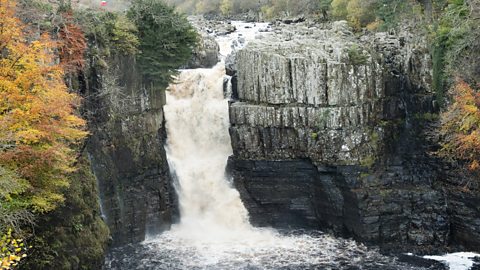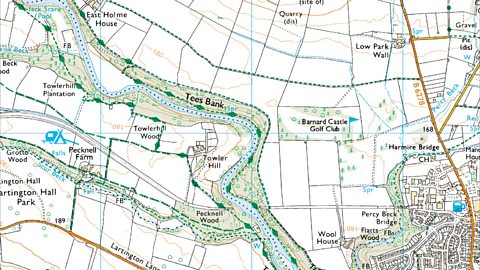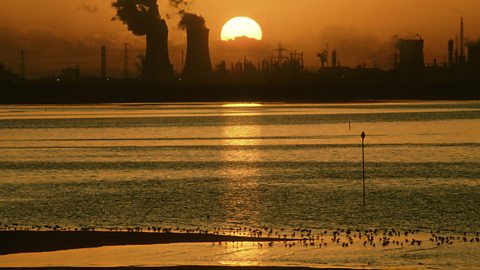Case study - river basin - River Tees
River Tees
The River Tees is located in the North of England. The sourceThe place where a river starts in its upper course. of the River Tees is located in the Pennines and the river flows east to its mouthThe place where a river meets the sea. where it joins the North Sea.
Upper course
- The upper courseThe highest section of a river located in the mountains. has hard impermeable rocks. Here, vertical erosionWhen the land is eroded or worn away in a downwards direction, eg a river that is high up will erode vertically because gravity pulls the water downwards. has formed a v-shaped valleyThe shape of the landscape which is narrow and steep in the upper course of a river..
- High Force, the UK's largest waterfall at 21 metres high, is located in the upper course. Here, a layer of hard resistant igneous rock called the Whin Sill (or Whinstone) lies over a layer of softer rocks (sandstones and slates) which erode more easily.

High Force waterfall
Middle course
- As the River Tees starts to erode sideways (lateral erosionThe wearing away of the landscape when a river erodes sideways.), it forms meanderA bend in a river.. These can be identified in the middle courseThe middle section of a river which has sloping land. near Barnard Castle.

┬® Crown copyright and database rights 2015 Ordnance Survey
Lower course
- Near Yarm, the meanders in the lower courseThe final section of a river located on flat land. are much larger, and Oxbow lakesa curved lake formed from a horseshoe bend in a river where the main stream has cut across the narrow end and no longer flows around the loop of the bend. have formed. In this area there are also leveeRidges or banks formed by deposits of alluvium left behind by the periodic flooding of rivers. Can also be artificially constructed banks or walls. which have formed when the river has flooded.
- The River Tees has a very large estuaryThe open mouth of the river where it meets the sea. with mudflats and sandbanks which supports wildlife in the area. Sites such as Seal Sands are protected areas.

The River Tees estuary and its mudflats
Human activity
There is a wide range of human activity in the Tees river basin.
- Transport and settlement - the Tees has been an important route way for centuries, and towns such as Yarm owe their existence to trading on the river.
- Water supply - Cow Green reservoir supplies the city of Middlesbrough.
- Farming - Sheep farming in the upper course.
- Tourism - The Pennine Way, High Force waterfall etc.
- Industry - the wide, flat valley floor and tidal estuary have been extensively developed for heavy industries, including steel (recently terminated), oil, gas and petro-chemical industries.